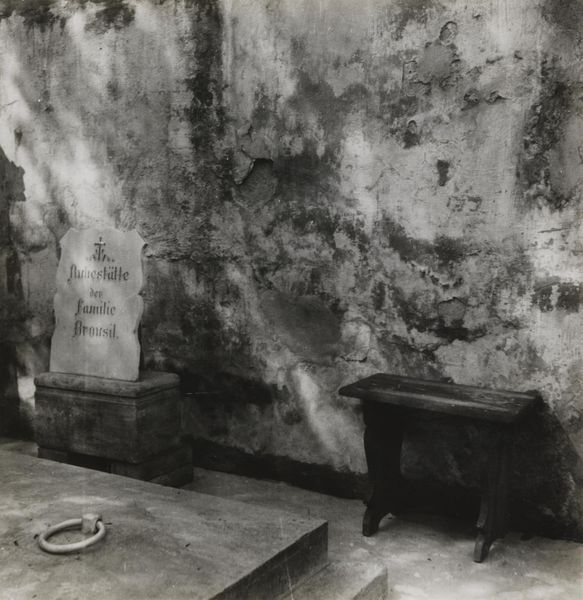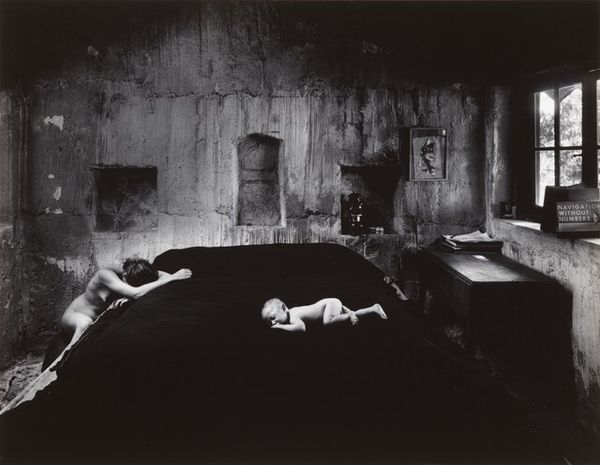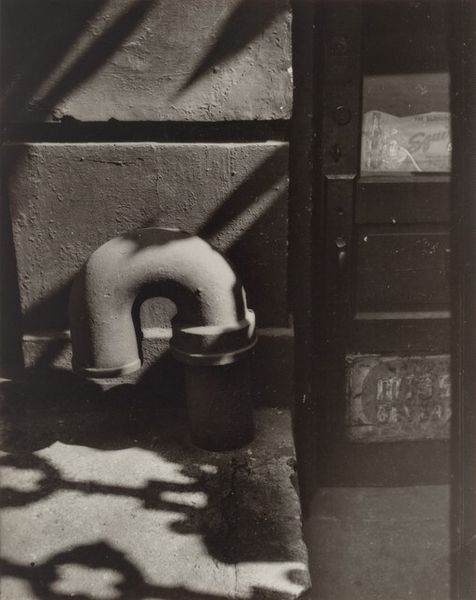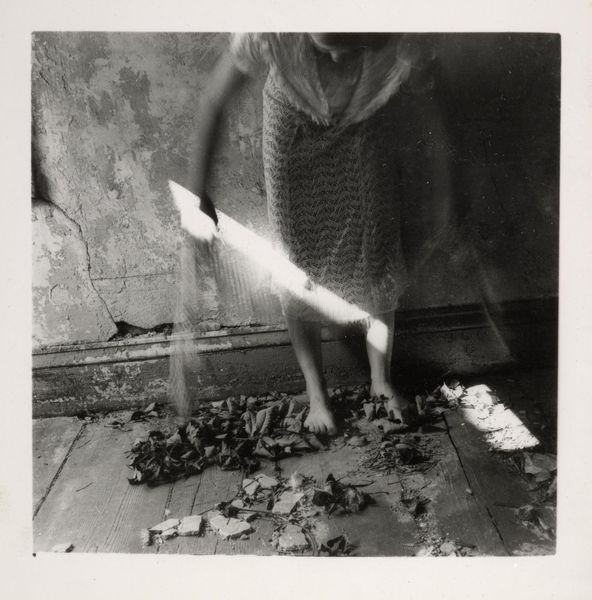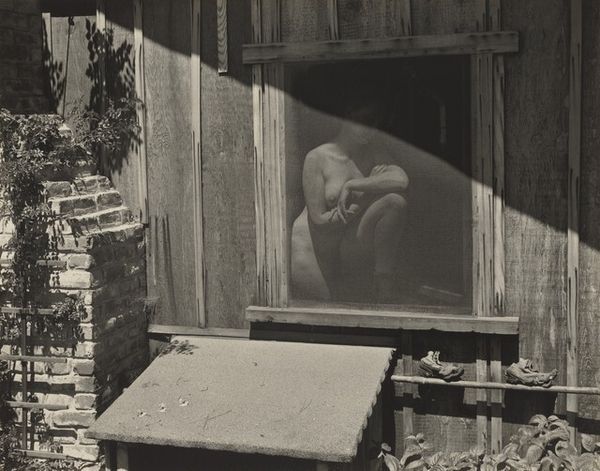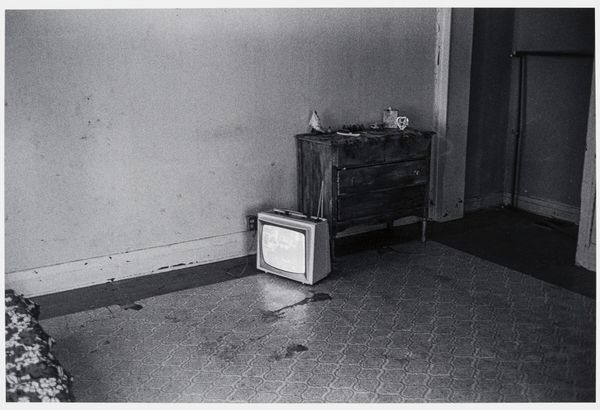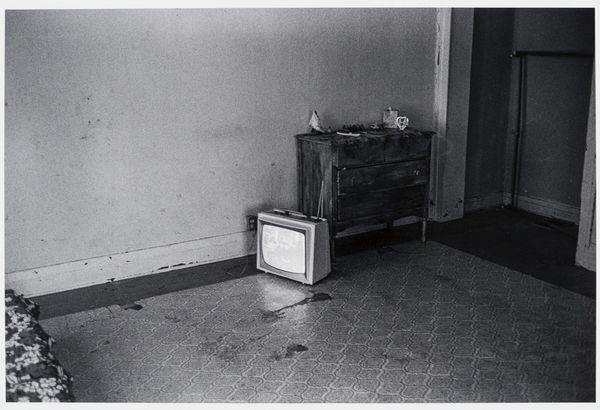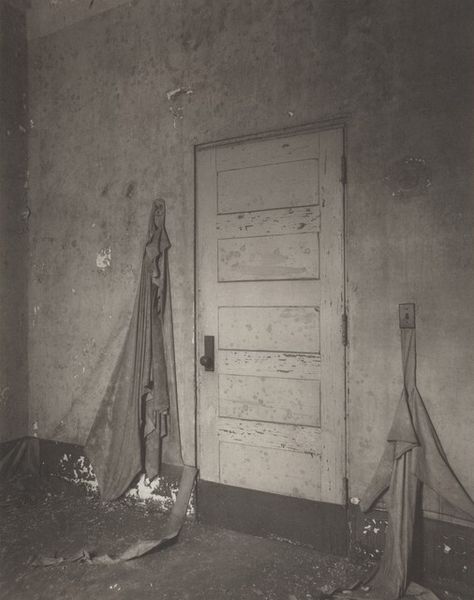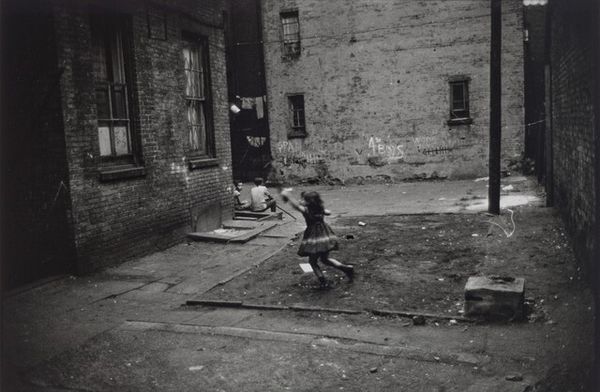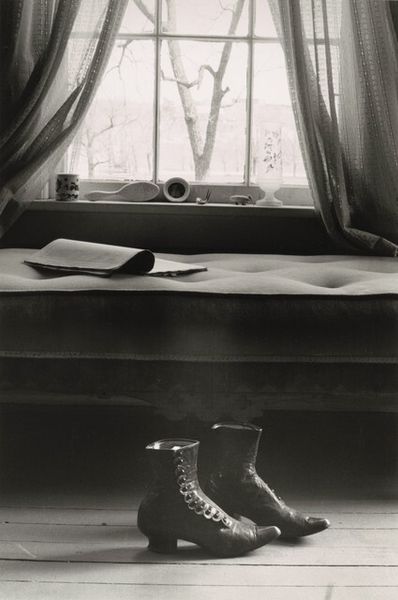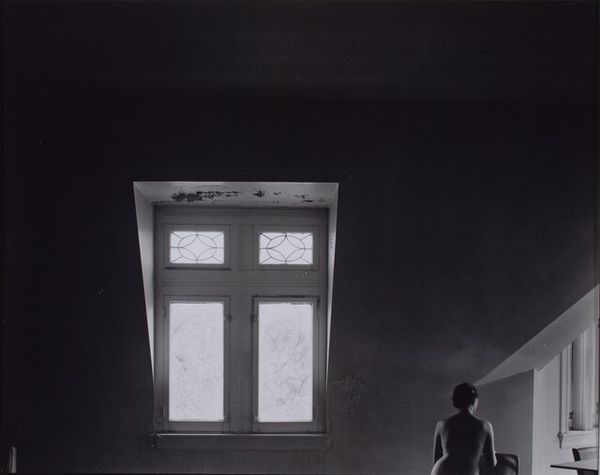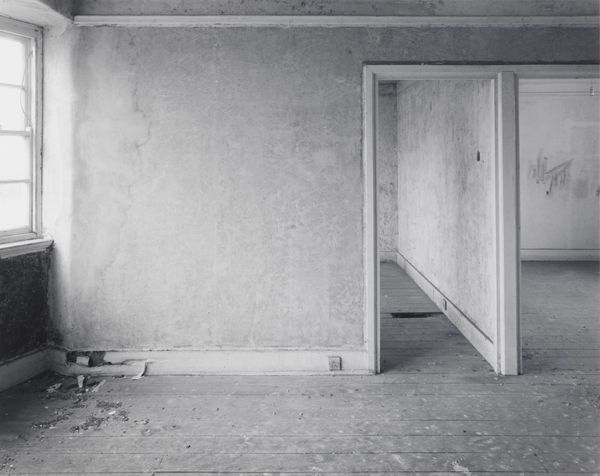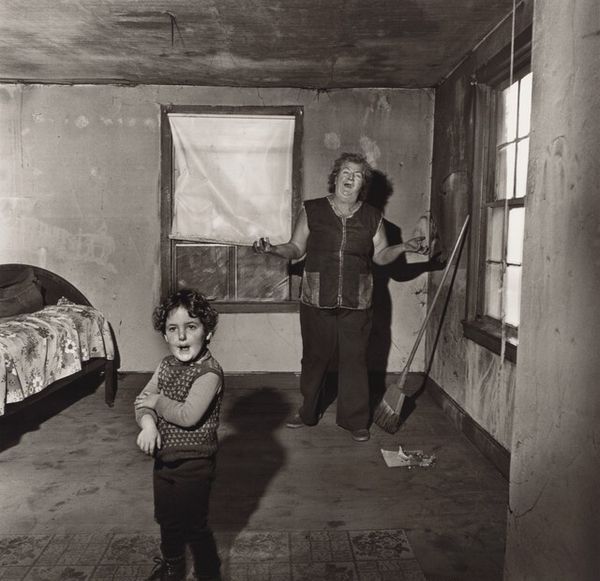
photography, gelatin-silver-print, installation-art
#
portrait
#
self-portrait
#
conceptual-art
#
photography
#
gelatin-silver-print
#
monochrome photography
#
installation-art
#
monochrome
Dimensions: image: 16.1 x 16.3 cm (6 5/16 x 6 7/16 in.) sheet: 25.5 x 20.4 cm (10 1/16 x 8 1/16 in.)
Copyright: National Gallery of Art: CC0 1.0
Curator: Oh, the air practically hums with melancholic secrets in this one. Editor: Absolutely. We’re looking at Francesca Woodman’s “House #3, Providence, Rhode Island,” taken in 1976, a gelatin silver print that feels less like a photograph and more like a fleeting glimpse into a dreamscape. Curator: Dreamscape is perfect. The stark monochrome, the peeling walls, and the figure blurred with movement…it all suggests a place suspended between realities. There’s something inherently unsettling yet strangely beautiful about it. The detritus on the floor resembles a scattering of fallen memories. Editor: It's important to contextualize Woodman's practice. She consistently used her own body in her work, often nude or semi-nude, exploring themes of identity, vulnerability, and the female form within patriarchal structures. This image speaks to the historical confinement of women within domestic spaces and the psychological impact of that enclosure. Note how the blurred figure almost merges with the crumbling architecture. Is she trying to escape? Or is she part of the house itself, decaying with it? Curator: Ah, decaying with it! Yes, exactly. There’s a merging of body and space; she becomes an ephemeral inhabitant, a ghost within her own story. It feels incredibly intimate and raw. What's left is almost absence and pure energy. Editor: Consider the socio-economic conditions of Providence, Rhode Island, at the time. The late '70s saw post-industrial decline in many Northeastern cities, creating abandoned spaces perfect as stages for Woodman's explorations. These aren't neutral spaces. The crumbling architecture emphasizes precarity. This could be about dispossession; who gets to be where, whose bodies are deemed valuable. Curator: It's more than decay of building, there's something about what it represents... the breaking down of a promise, of a safe space perhaps? Maybe Woodman felt the same vulnerability with her body as the crumbling home shows to all viewers in its monochrome state. I think that is why the figure and the location in the art merge, even decay, into one piece of creative vulnerability. Editor: This piece makes me reflect about who and what is lost when those societal safety nets erode away. Woodman manages to freeze those questions, those struggles, in a permanent medium, provoking us to question structures of power even to this day. Curator: Precisely, and the beauty of it lies in how it evokes more questions than it answers. Editor: Leaving us, appropriately, suspended in uncertainty.
Comments
No comments
Be the first to comment and join the conversation on the ultimate creative platform.

